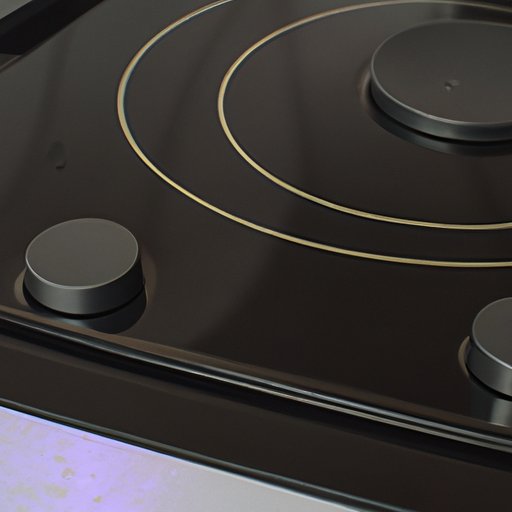Introduction
Induction cooking is a revolutionary technology that has been gaining popularity in recent years. An induction stove uses a magnetic field to transfer heat directly to the pot or pan, making it a much more efficient way to cook. In this article, we’ll explore the science behind induction cooking, compare it to gas and electric stoves, and discuss tips for successfully using an induction stove.
Explaining the Science Behind Induction Stove Technology
Induction cooking relies on two scientific principles: magnetic fields and heat transfer. The induction stove has an electromagnet beneath its surface that produces a powerful magnetic field. This magnetic field interacts with the metal of the pot or pan and creates electrical currents that generate heat. This direct transfer of heat makes induction cooking much more efficient than traditional cooking methods.
The chemistry of induction cooking is also important. The electromagnetic field will only work with ferromagnetic materials, such as cast iron, stainless steel, and certain aluminum alloys. Non-ferromagnetic pots and pans, such as copper or glass, won’t be affected by the magnetic field and won’t generate any heat.
Comparing Induction Stoves to Gas and Electric Stoves
When comparing induction stoves to gas and electric stoves, there are both advantages and disadvantages to each type. Induction stoves are much more energy efficient than gas or electric stoves, so they’re better for the environment and can save you money on your utility bills. However, they can be more expensive to purchase than gas or electric stoves, and they require special pots and pans that are compatible with the induction technology.
Gas stoves are generally less expensive than induction stoves, but they’re not as energy efficient. They also produce a lot of heat, which can make them unsafe in some situations. Electric stoves are more energy efficient than gas stoves, but they’re not as responsive as induction stoves. They also take longer to heat up and cool down.
Tips for Successfully Using an Induction Stove
Using an induction stove correctly is key to getting the most out of this revolutionary technology. Here are some tips for successfully using an induction stove:
- Always use ferromagnetic pots and pans with your induction stove.
- Clean your induction stove regularly to avoid buildup of grease and food particles.
- Avoid using oils or fats that have a low smoke point, as these can quickly overheat and cause a fire.
- Keep flammable items away from the stove to avoid accidents.
- Be sure to turn off the stove after use and unplug it when not in use.

How to Troubleshoot Common Induction Stove Issues
Like any appliance, induction stoves can experience problems from time to time. Here are some common problems and solutions:
- If the stove isn’t heating up, check to make sure it’s plugged in and the power switch is on.
- If the stove is turning off unexpectedly, check to make sure the pan is properly positioned on the stove and that the pan is ferromagnetic.
- If the stove isn’t responding to temperature adjustments, make sure the control panel is clean and free of debris.
- If the stove is producing an unusual smell, check for any overheated oil or fat and make sure the ventilation fan is working properly.

A Look at the History of Induction Stove Development
Induction stoves have come a long way since their introduction in the early 20th century. The first induction stove was invented in 1883 by Nikola Tesla. Over the next few decades, various inventors improved upon Tesla’s design, and by the 1950s, induction stoves had become popular in Europe. In the 1960s, they began to gain traction in the United States, and by the 1980s, they were widely available.

Introducing Modern Induction Cooktops and Ovens
Modern induction cooktops and ovens are even more advanced than their predecessors. Many models feature digital displays for precise temperature control, multiple cooking zones for simultaneous cooking of multiple dishes, and automatic shutoff for added safety. Some models also feature built-in timers and sensors that can detect when a pot or pan has been removed from the stove.
Conclusion
Induction stoves are a revolutionary way to cook. They are much more energy efficient than gas or electric stoves, and they offer precise temperature control and quick response times. With proper maintenance and care, an induction stove can last for many years. Whether you’re looking to upgrade your kitchen or just want to try something new, an induction stove is an excellent choice.
(Note: Is this article not meeting your expectations? Do you have knowledge or insights to share? Unlock new opportunities and expand your reach by joining our authors team. Click Registration to join us and share your expertise with our readers.)
